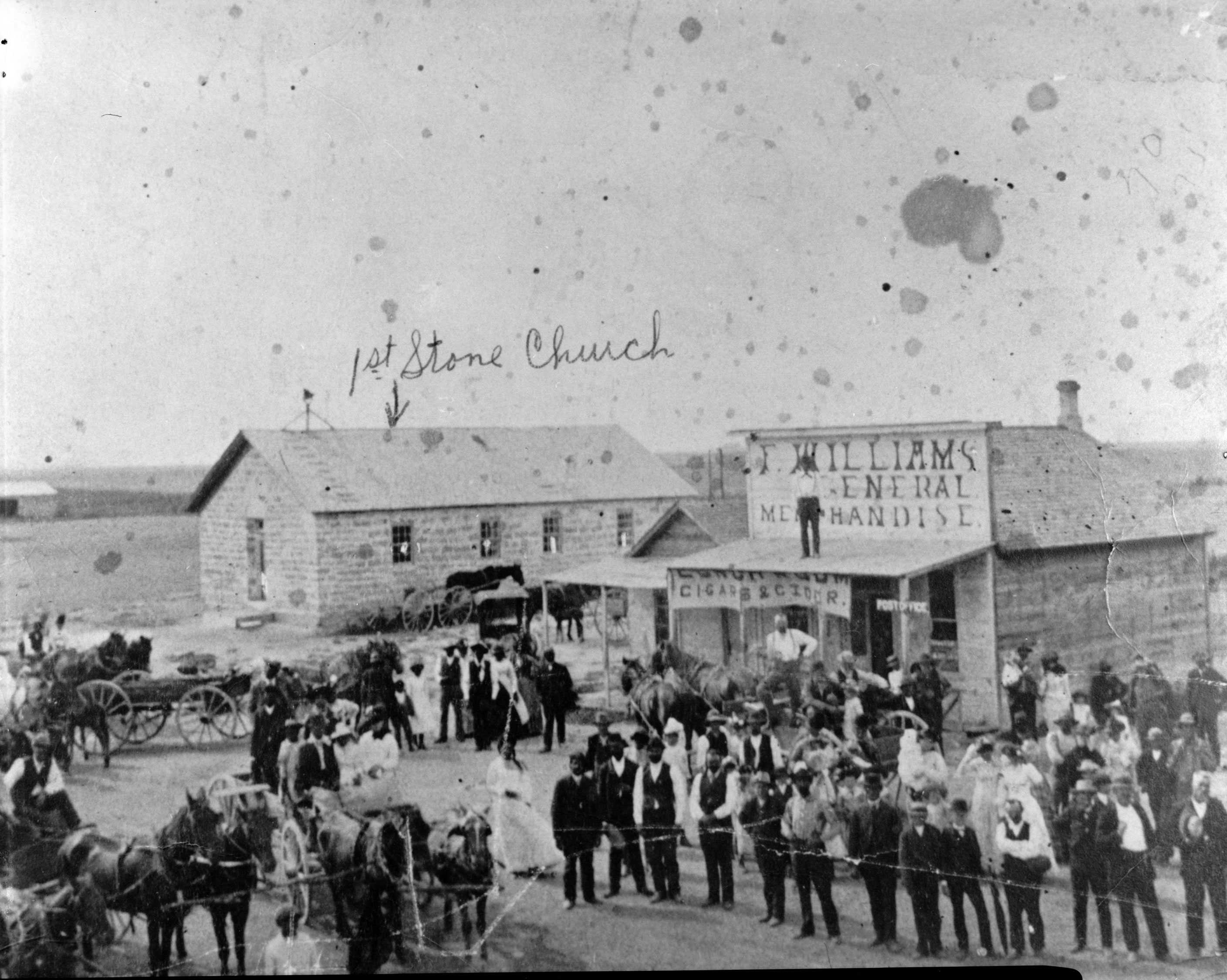
Chapter 1
Life After Slavery
Reconstruction defines the period after the Civil War when the federal government controlled former Confederate states. When federal troops were stationed in the South, African Americans made economic progress and elected representatives to local, state, and national office. But when federal troops withdrew in 1877, white southerners challenged African Americans’ rights and freedoms. Violence and intimidation were used to keep African Americans from voting, owning land, and exercising their independence.
1870 Statistical Highlights
90% of African Americans lived in the South and 85% in rural areas.
Creating All-Black Towns
Across the country, African Americans created towns and neighborhoods in which they were the majority. These communities offered greater independence and opportunity. They bought land, built churches, and established schools.
Montgomery County, Maryland
A mother and her children in Montgomery County, Maryland, in the late 1800s
By 1900, there were at least eight African American communities in Montgomery County, Maryland. Unlike other rural communities, residents were not tenant farmers—they owned the land. Owning land gave Black Marylanders greater autonomy over the crops they produced and was an important step towards independence.
Because they owned their own homes, African Americans could make improvements and put down community roots. Descendants of these early settlers still live in these communities today.

Jonesville, Maryland
Jones-Hall-Sims House, 1979
Oil lamp from the Jones-Hall-Sims House
In 1874, Richard and Erasmus Jones purchased nine acres of land from the Joseph Bruner estate in Montgomery County, Maryland. Farming land on which they were previously enslaved, the brothers eventually gave parcels to their children and other relatives. Jonesville, as the community became known, featured a school and church built by its residents. By 1900, it was one of eight Black communities in western Montgomery County.
The Jones-Hall-Sims House was one of the first homes built in Jonesville. Though no surviving photograph of the original house exists, this 1979 picture shows the house after several additions and improvements.
Eatonville, Florida
Hungerford Normal and Industrial School sawmill in Eatonville, Florida
Zora Neale Hurston
House of Ruth Medal
Eatonville was named after Josiah C. Eaton, one of the few white landowners in the area willing to sell large tracts of land to African Americans. Black families first bought land in Eatonville in 1882. Five years later, 27 African American men voted to incorporate the town, which consisted of 112 acres. Their vote made Eatonville the first incorporated African American community in the nation.
Author and anthropologist Zora Neale Hurston grew up in Eatonville. She had fond memories of the town and used it as the setting for several of her works.

All-Black Towns of Oklahoma
The Elliott Family of Fort Gibson, Oklahoma, ca. 1910
Brooch belonging to Lillian Johnson Elliott
In 1890, the Oklahoma Immigration Association began to send agents throughout the South to recruit African Americans to the territory. The agents told of opportunities in Oklahoma and its all-Black towns like Guthrie and Langston. The agents also described African American communities in larger cities like Oklahoma City, Tulsa, and Muskogee. The group even launched an unsuccessful effort to make Oklahoma an all-Black state.
Freedmen’s Town, Houston, Texas
Gregory School Building, 1903
After the Civil War, freed people settled in what is now Houston’s 4th Ward. African Americans went to Houston in search of opportunity and safety. They bought land, built churches, organized schools, and established businesses geared to their own needs. By 1900, Freedmen’s Town was a thriving community and the center of Black Houston.

Nicodemus, Kansas
Washington Street in Nicodemus, Kansas
Early homestead in Nicodemus, Kansas
In 1877, a land developer and a Black minister formed the Nicodemus Town Company to attract African American settlers from the South. The town in northwest Kansas offered farmland for sale and promised greater economic independence. Some 300 settlers arrived from Kentucky, hoping to leave behind increasing discrimination. They built a school and a church, and for a time the town flourished. But the railroad bypassed Nicodemus, and the town’s development faltered. The town of Nicodemus still exists today and is a National Historic Landmark.
Mound Bayou, Mississippi
Downtown Mound Bayou, Mississippi, ca. 1900
Mound Bayou Oil Mill Stock certificate
In 1887, Isaiah T. Montgomery and Benjamin T. Green founded Mound Bayou on 840 acres of land they purchased from Joseph Davis, who was the brother of Jefferson Davis, the former president of the Confederates States of America. The town was created in collaboration with the Yazoo & Mississippi Valley Railroad, which needed help clearing the land for its railroad tracks. The first settlers wanted to create a place allowing African Americans to escape southern repression and build sanctuaries for themselves and their families.

Whitesboro, New Jersey
Advertisement encouraging African Americans to buy homes in Whitesboro, New Jersey
In 1901, members of the A.M.E. Zion Church in Cape May, New Jersey, wanted to buy land for a housing development. Due to white resistance, they were unable to purchase land in Cape May. With the help of investor and politician George H. White of North Carolina, they purchased 2,000 acres north of the city.
Buyers had to be of sound character with “industrious habits.” They could buy a one-sixth-acre lot for $50 with $5 down. White’s involvement prompted more Black people from Virginia and North Carolina to buy plots, and in 1902 the town was named Whitesboro in his honor. It still exists today.
